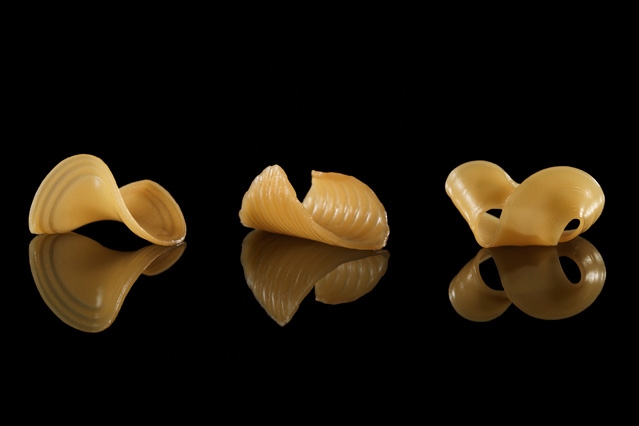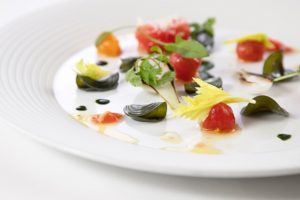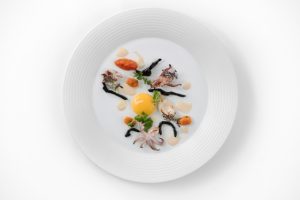MIT has 3D printed shape-shifting pasta

Many of you are familiar with the innovations made in 3D printed food, such as with chocolate and cake molds, an exciting innovation for the foodies around the world. But now MIT’S Tangible Media Group is bringing us the next level of 3D printed food, with their shape-shifting pasta, a new way to make dinnertime both sustainable and fun!
Using 3D printing technology, researchers have discovered a way to make us more engaged than ever with our food; a strategy that is sure to capture adults and kids alike. But, these fun shape changes were not just created for our mealtime entertainment. Instead, they were engineered to make the packaging of pasta more efficient, ultimately saving costs and making food shipping and packaging more sustainable.

The screen printing process// MIT
Researchers Lining Yao and Wen Wang printed their pasta with a 3Drag 3D printer chassis with a Velleman 8400 control board using Marlin firmware and the Choco syringe extruders. Using a flat, two-layer sheet made of gelatin (a density that naturally curls when in water) and starch, they then printed edible cellulose onto the gelatin. Because cellulose doesn’t absorb much water, it thus acts as a “barrier,” controlling how much water the gelatin layer is exposed to.
Thanks to 3D printing, the researchers are then able to control the size and shape of the pasta, giving them the opportunity to print a shape that is completely flat, or one that is made to fit into a certain box. Once the pasta comes into contact with water, the pasta will then change into the desired shape, giving pasta manufacturers a product that could potentially have lower shipping costs, less waste and more sustainability.
- photo// MIT
- photo// MIT
To try out their pasta, the researchers enlisted the help of chef Matthew Delisle from L’Espalier, a Boston based restaurant, to create noodles that could be incorporated into dishes. The first dish was made up of transparent discs of gelatin that were flavored with plankton and squid ink. With the pasta, they paired it with small beads of moist cavier, which would then curl themselves around the beads of caviar in reaction to the moisture of it. The second dish was made up of two gelatins that melt at different temperatures, causing the noodles to divide on their own when coming in contact with the paired broth. The noodles would give different reactions when the broth came into contact with a particular part of the noodle, making a beautiful display.
In addition, the researchers have provided instructions on how to create your own shape-shifting pasta with lower-tech methods. This includes a database of pasta patterns that anyone can use. In the future, the team would like to set up a system where anyone can order their own custom pasta shapes online.
Check out the shape-shifting pasta below:
While there is still some time left before shape-shifting pasta hits a store near you, we’re sure that manufacturers of pasta and food alike have all their eyes on these researchers and their latest innovation. We look forward to seeing what’s in store for the future of 3D printed food!
You can read their full report here.
Are you excited to try this shape-shifting pasta? Let us know in a comment below or on our Facebook and Twitter page! For all the latest 3D printing news delivered straight to your inbox, sign up for our weekly newsletter today!








